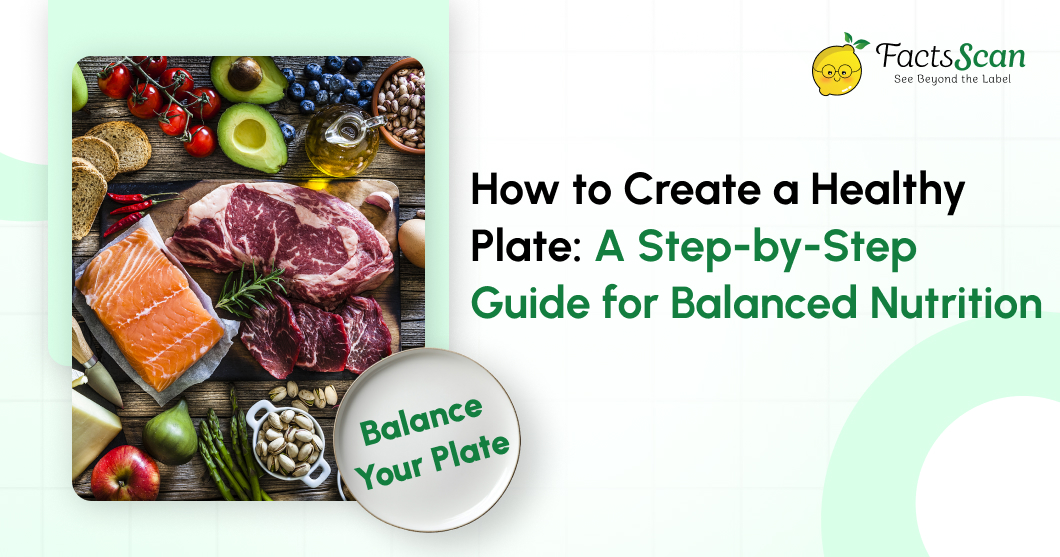How to Create a Healthy Plate: A Step-by-Step Guide for Balanced Nutrition
Summary :
Learn how to make a healthy plate with this easy step-by-step guide. You can figure out how to add the right mix of vegetables, proteins, grains, and good fats to your meals. This simple way of eating can help you feel better, stay strong, and take care of your health every day.
Eating a balanced diet is the foundation of a healthy and active lifestyle. The simple act of arranging a proper healthy plate can significantly impact your overall well-being. If you’ve struggled with figuring out what “balanced nutrition” truly means or how to structure your meals, this step-by-step guide will provide you with all the answers.
By the end of this article, you’ll know exactly how to create nutritionally rich and balanced meals, avoid common dietary pitfalls, and set yourself up for a healthier, happier life.
Understanding the Basics of a Healthy Plate
Creating a healthy plate starts with understanding the fundamentals of balanced nutrition. A healthy plate is not just about consuming fewer calories; it’s about ensuring your body gets all the essential nutrients it needs to function optimally.
A Quick Overview of Balanced Nutrition
Balanced nutrition consists of appropriate proportions of macronutrients — protein, carbohydrates, and fats — as well as a variety of micronutrients from fruits and vegetables. Each of these components plays a distinct, indispensable role in your overall health.
- Proteins: Build and repair muscles, tissues, and cells.
- Carbohydrates: Supply energy to fuel your body and brain.
- Fats: Support cell growth, protect organs, and help the absorption of vitamins.
- Vegetables and Fruits: Rich in vitamins, minerals, fibre, and antioxidants, these support your immune system and improve digestion.
When all these groups are consumed in the right proportions, they create a “balanced plate,” promoting sustainable energy levels, better digestion, and improved focus throughout the day.
Step-by-Step Guide to Building a Healthy Plate
Now that you understand the components of a balanced diet, it’s time to build your plate. Here’s a step-by-step guide to ensure every meal is as nutritionally rich as possible.
Step 1: Divide Your Plate Into Portions
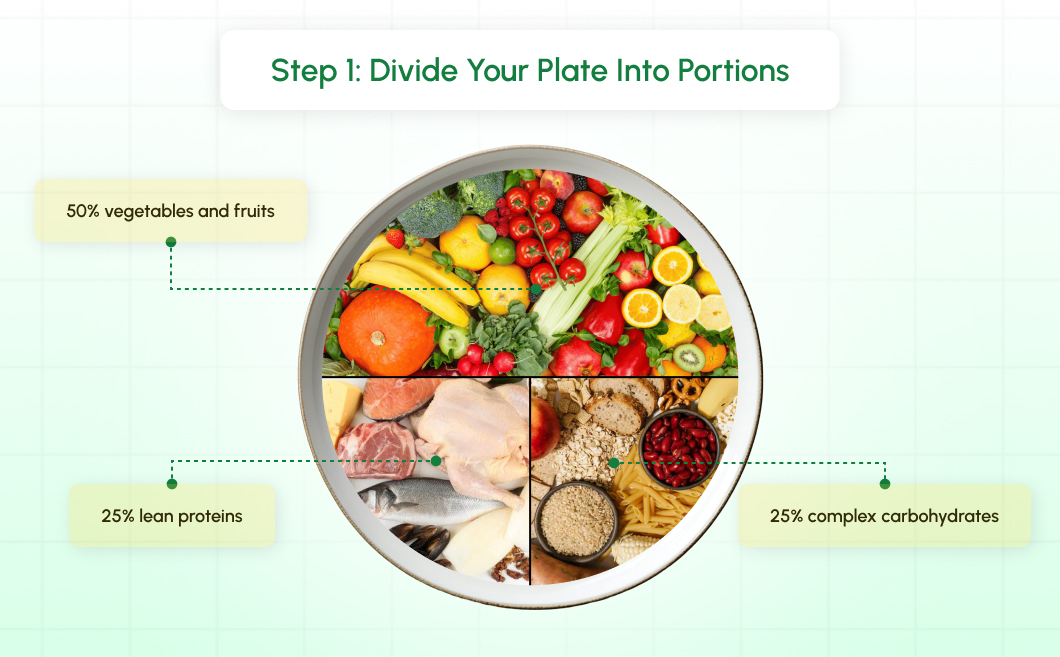
Visualise your plate divided into three main sections to maintain balance:
- 50% vegetables and fruits
- 25% lean proteins
- 25% complex carbohydrates
This simple strategy will make it easier to create balanced meals without overthinking it.
Step 2: Choose Lean Proteins
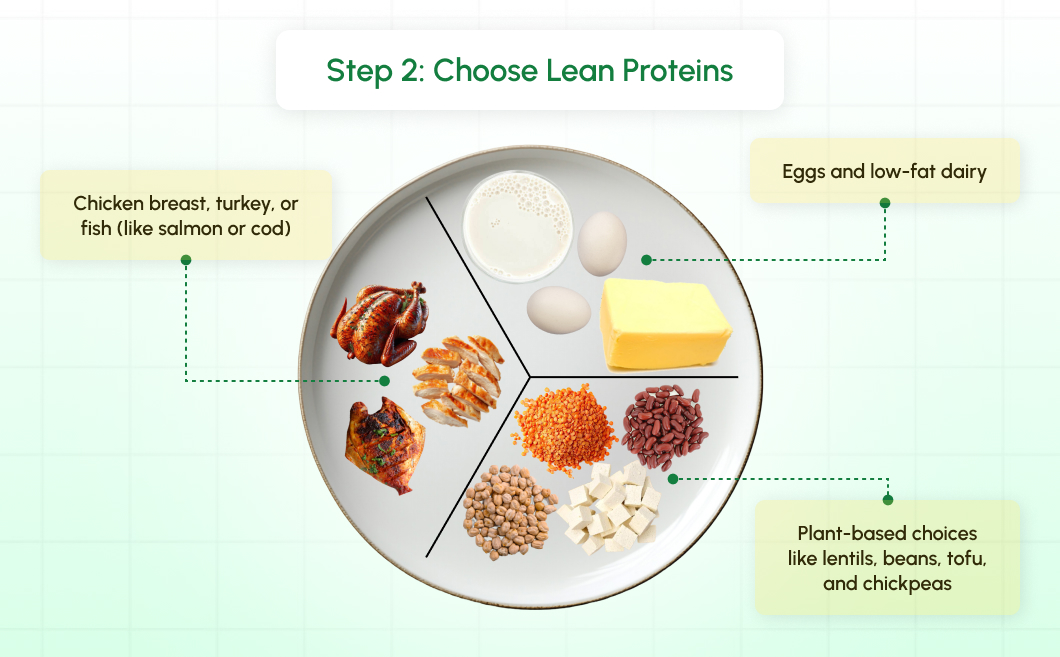
Proteins are vital for muscle repair, immune function, and hormone production. Opt for lean or plant-based proteins to maximise health benefits while minimising unnecessary saturated fats.
Some excellent options for protein include:
- Chicken breast, turkey, or fish (like salmon or cod)
- Eggs and low-fat dairy
- Plant-based choices like lentils, beans, tofu, and chickpeas
Pro tip: Aim for a portion size similar to the size of your palm.
Step 3: Select Complex Carbohydrates
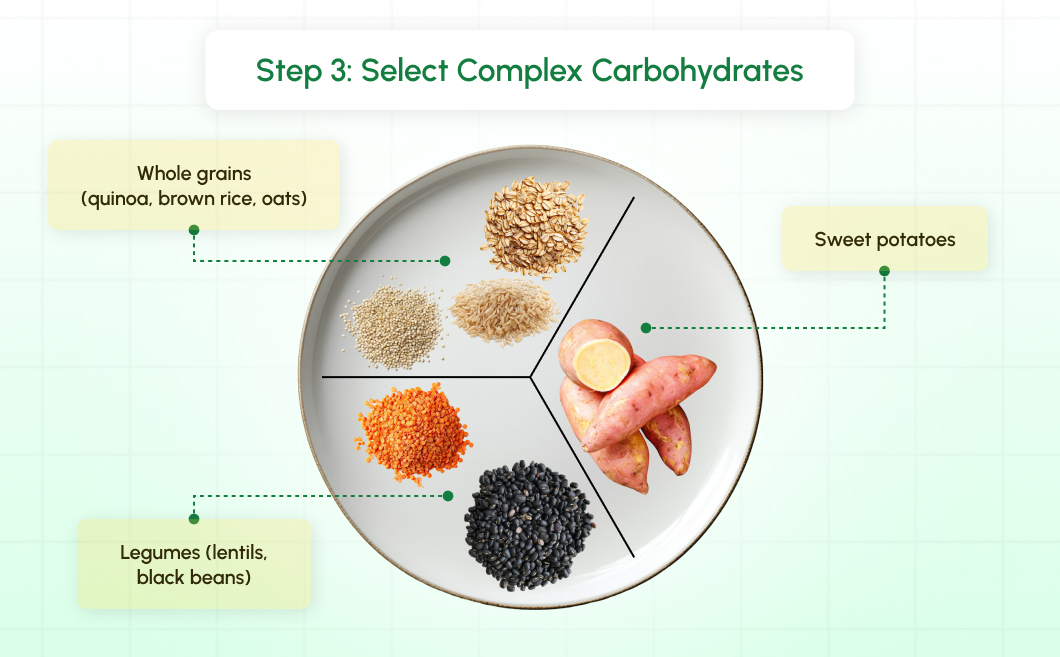
Carbs are essential for energy, but not all carbs are created equal. Choose complex carbohydrates, which are rich in fibre, vitamins, and minerals, and avoid refined options like white bread or sugary cereals.
Healthy carbohydrate choices include:
- Whole grains (quinoa, brown rice, oats)
- Sweet potatoes
- Legumes (lentils, black beans)
Pro tip: Control your portion size to fit roughly a quarter of your plate — too many carbs can lead to spikes in blood sugar levels.
Step 4: Add a Variety of Vegetables
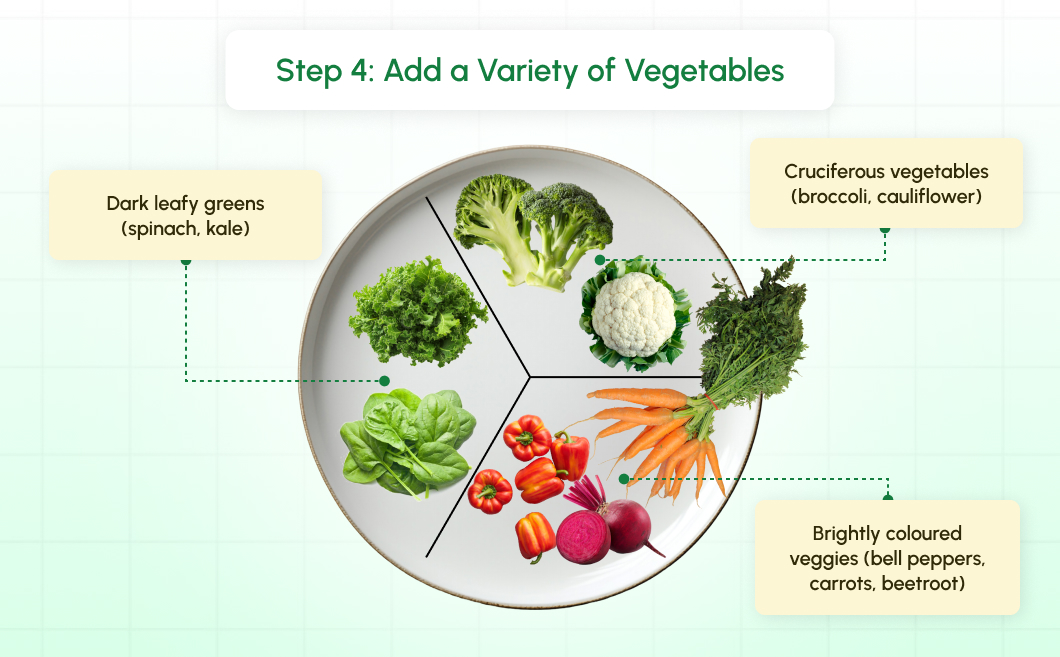
Half your plate should consist of vegetables to ensure you’re packing your meal with vitamins, minerals, and antioxidants. Focus on variety and colour to maximise nutritional benefits.
Great vegetable options include:
- Dark leafy greens (spinach, kale)
- Cruciferous vegetables (broccoli, cauliflower)
- Brightly coloured veggies (bell peppers, carrots, beetroot)
Pro tip: Include both raw and cooked vegetables for a mix of textures and maximum nutrition.
Step 5: Include Healthy Fats
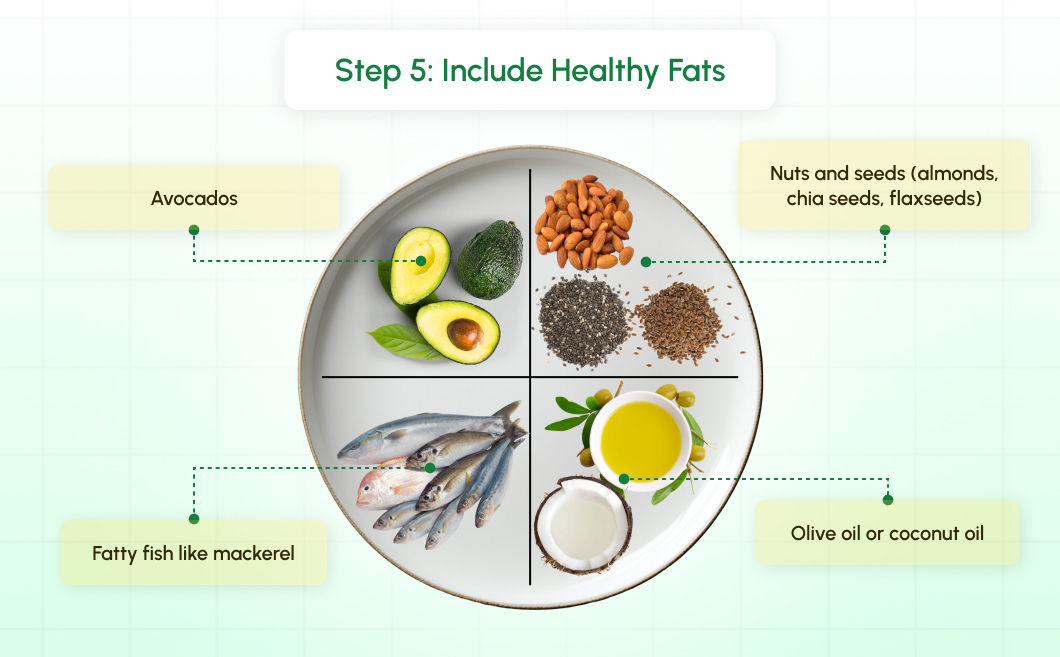
Fats are often misunderstood, but the right kind of fats can do wonders for your body. They regulate hormones, support brain function, and improve the absorption of fat-soluble vitamins.
Healthy fat sources include:
- Avocados
- Nuts and seeds (almonds, chia seeds, flaxseeds)
- Olive oil or coconut oil
- Fatty fish like mackerel
Pro tip: Limit portion sizes to about a tablespoon of oil or a sprinkling of nuts to avoid consuming excess calories.
Tips for Maintaining a Healthy Plate
Building a healthy plate is one thing—maintaining it consistently is another. These tips will help you sustain this valuable habit.
1. Meal Planning Strategies
- Pre-plan your meals for the week to ensure variety and avoid relying on last-minute takeaways.
- Batch-cook meals like soups, roasted vegetables, and grain bowls for grab-and-go convenience.
2. Portion Control Techniques
- Use smaller plates to naturally reduce portion sizes.
- Avoid going back for seconds unless you’re genuinely hungry, not just eating out of habit.
3. Smart Snacking Ideas
- Choose nutrient-dense snacks such as Greek yoghurt with berries, hummus with vegetable sticks, or a handful of almonds.
- Steer clear of processed snacks like crisps or pastries that offer little nutritional value.
Common Mistakes to Avoid
Even with the best intentions, there are common errors people make when striving for healthier eating. Watch out for these pitfalls.
1. Overeating Processed Foods
Pre-packaged and processed meals often contain high levels of sodium, sugar, and unhealthy fats. Skip the frozen pizzas and packaged snacks, and opt for whole foods whenever possible.
2. Ignoring Dietary Needs
Everyone’s nutritional requirements are different. If you have specific dietary restrictions or health conditions, adapt your plate to include what works best for your body. Consulting a nutritionist can be invaluable.
3. Neglecting Hydration
No matter how balanced your meals are, staying hydrated is just as important. Drink at least 2 litres of water per day and avoid sugary drinks.
Start Building a Healthier Plate Today
Creating a healthy plate doesn’t have to be complicated. With this guide in hand, you now have the knowledge to craft balanced, nutritious meals that fuel your body and mind.
Remember, one small step towards mindful eating is a giant leap towards a healthier life. To make better food choices even easier, we recommend using FactsScan—the must-have app for spotting harmful ingredients, artificial additives, and unhealthy preservatives in packaged foods.
Download FactsScan now!
Start your healthy eating journey today—your body will thank you tomorrow.
Ready to make Healthier Choices?
Download FactsScan now from the Google Play Store and App Store and take charge of your food choices.

Recent Articles
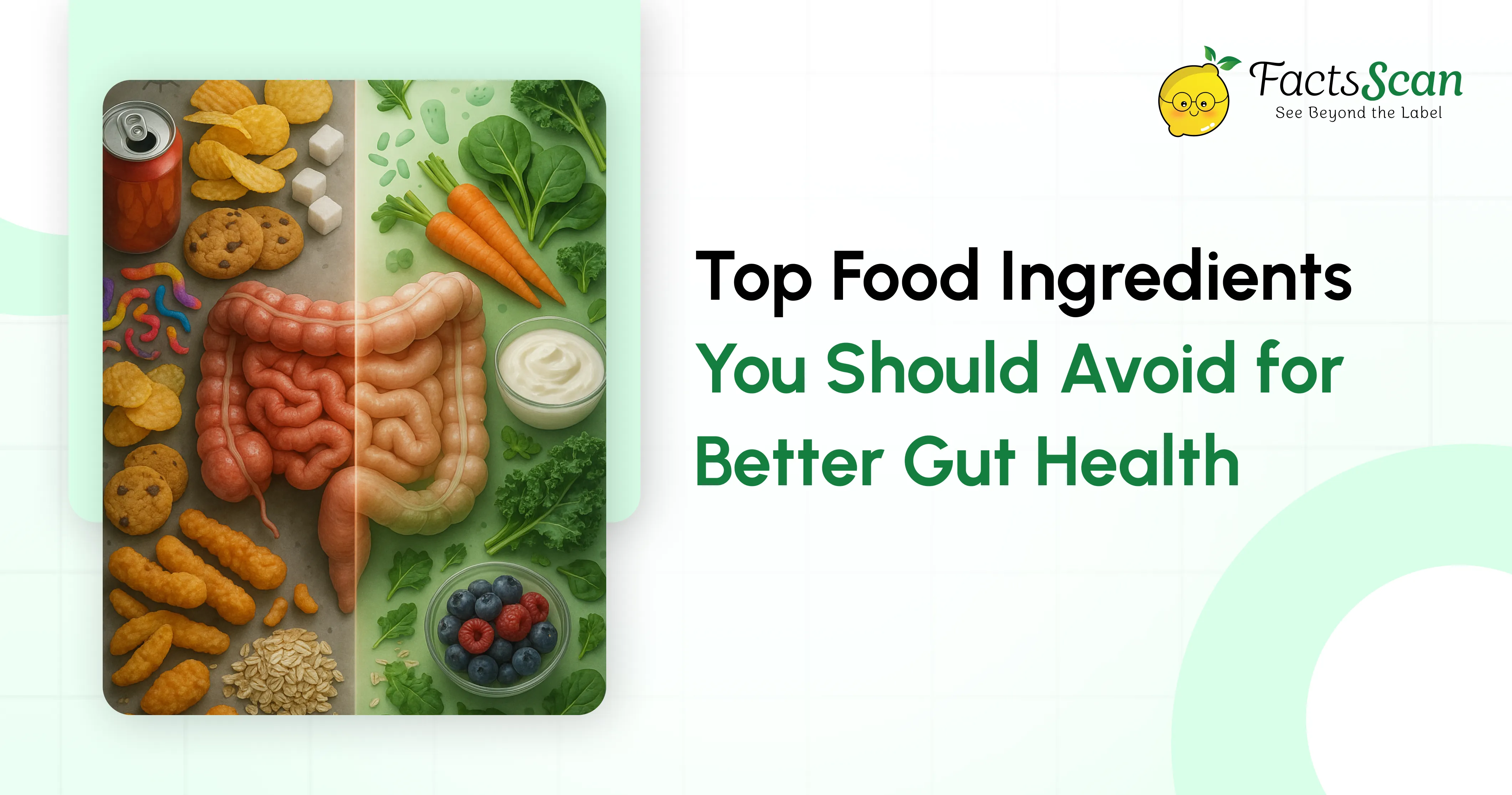
Top Food Ingredients You Should Avoid for Better Gut Health
Your gut microbiome is the foundation of your overall wellness, affecting everything from digestion to immune function. Yet many everyday food ingredients—artificial sweeteners, refined oils, emulsifiers, and preservatives—are slowly damaging this delicate ecosystem. Learn which harmful ingredients to eliminate from your diet and discover healthier alternatives using smart tools to identify nutritious, gut-friendly options that truly support your digestive health and long-term wellbeing.
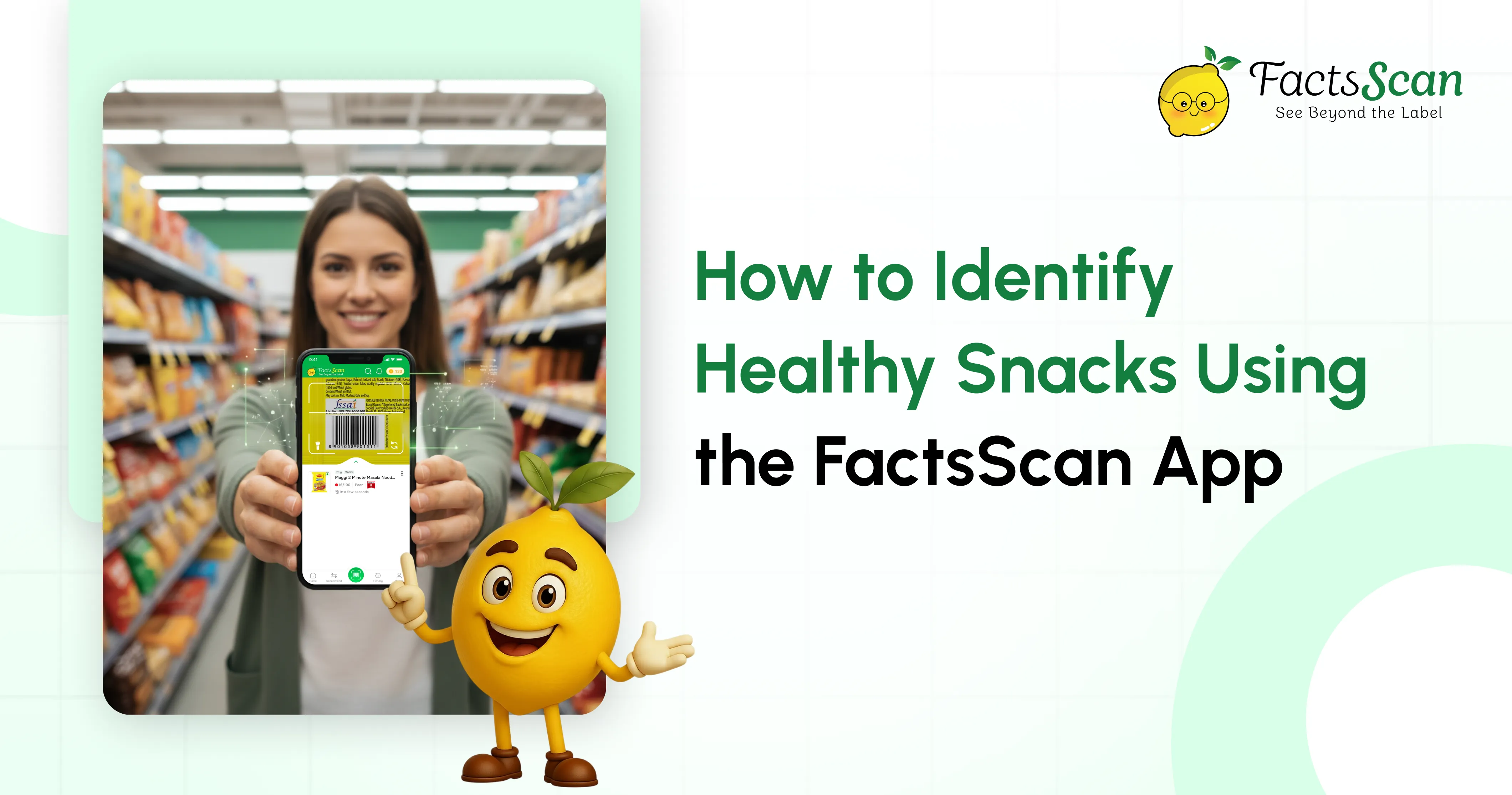
How to Identify Healthy Snacks Using the FactsScan App
Discover how the FactsScan App helps you make smarter snacking choices by instantly analyzing ingredients, nutrition scores, and additives. Learn how this AI-powered tool identifies truly healthy snacks and guides you toward better food decisions with just one scan.

Every Shopper Needs This Game-Changing Product Ingredients Checker App
Tired of confusing food labels and hidden ingredients? This game changing product ingredients checker app helps shoppers instantly scan barcodes to uncover real nutritional facts, health scores, and safer alternatives, making smarter, healthier shopping easier than ever.
 09 Apr 2025
09 Apr 2025 6 Min Read
6 Min Read 
